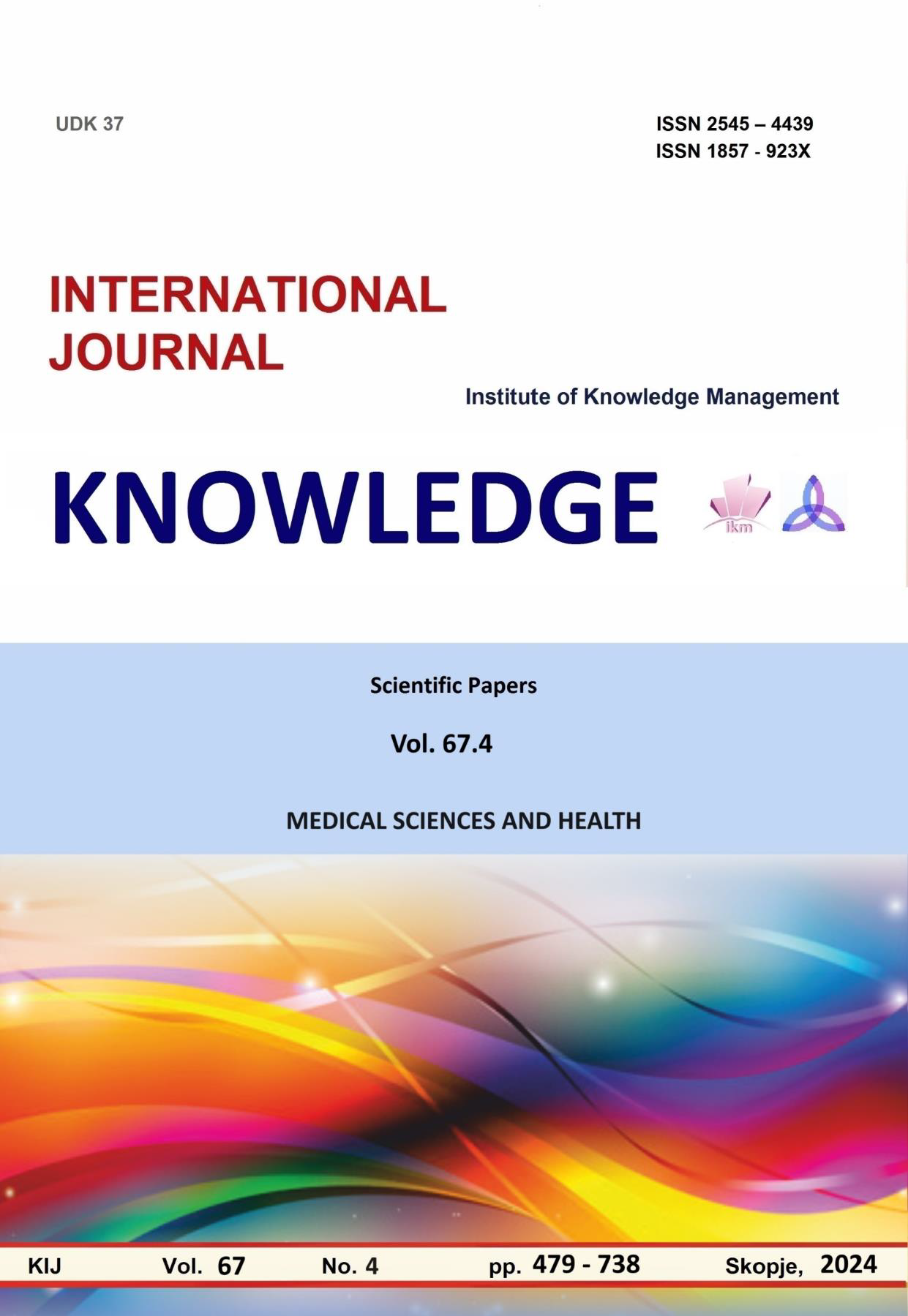МОНИТОРИРАНЕ НА КЛИНИЧНО ЛАБОРАТОРНИ ПОКАЗАТЕЛИ ПРИ СПОРТИСТИ И АКТИВНО СПОРТУВАЩИ ЗА ЗДРАВЕ
MONITORING OF CLINICAL AND LABORATORY INDICES IN ATHLETS AND ACTIVE SPORTSMAN FOR HEALTH
Author(s): Kostadin KanalevSubject(s): Social Sciences, Sociology, Health and medicine and law, Sports Studies
Published by: Scientific Institute of Management and Knowledge
Keywords: athletes;clinical and laboratory indices;active sportsmen for health;hormones
Summary/Abstract: The purpose of the present study is to provide a brief overview of some of the necessary clinical and laboratory indices that are monitored in athletes and active sportsmen for health. To fulfill the aim of the study we sought information on commonly monitored biomarkers in elite athletes. We examined and analyzed the clinical significance of these indicators, as well as their importance in athletes and active sportsmen for health. We used textbooks, medical student training manuals as well as classic and new publications in the fields of medicine, physical education, sports, public health and more. Based on the processed data, we made several groups of clinical and laboratory indicators. A group of indices characterizing the state of muscles such as testosterone, growth hormone, insulin like growth factor 1, which are associated with increased protein synthesis. Cortisol, on the other hand, stimulates protein breakdown and is an indicator of high muscle stress and slow recovery. The same group includes C reactive protein, creatine kinase, interleukin 6, etc., which may be associated with trauma, an increased risk of injury, or an inflammatory process. Another group of laboratory indicators is the blood's capacity to carry oxygen. This group includes the number of erythrocytes, level of hemoglobin, iron, ferritin, transferrin, etc. These are indicators of essential importance for the high endurance of professional athletes and active sportsmen for health. Nutrition for athletes is extremely important both for enhancing athletic performance and for recovery. Different metabolic indicators also fall into the group of indicators characterizing the nutritional status. This group includes the level of glucose in the blood, total protein, albumin, globulins, the level of various amino acids, etc. Indicators of fat metabolism such as total cholesterol, HDL cholesterol, LDL cholesterol, triglycerides, free fatty acids, etc. should not be ignored. It is also important to monitor the levels of some micronutrients such as Vitamin D, B vitamins, Vitamin E, magnesium, zinc, chromium, etc. The importance of water balance for health as well as for the achievement of high sports achievements is indisputable. Laboratory indicators presenting a clear assessment of water balance are specific gravity and osmolality of urine, osmolality of blood, ratio of urea creatinine in blood, level of sodium in blood. The current study divides recommended clinical laboratory indicators in athletes and active sportsmen for health into several groups indicators characterizing the condition of the muscles, laboratory indicators for the capacity of the blood to carry oxygen, indicators characterizing the nutritional status and indicators for evaluating the water balance. I support the recommendations for regular preventive examinations of the population. In order to increase sports results and improve recovery, I support the recommendations for monitoring some clinical and laboratory indicators in athletes and active sportsmen for health.
Journal: Knowledge - International Journal
- Issue Year: 67/2024
- Issue No: 4
- Page Range: 731-734
- Page Count: 4
- Language: Bulgarian

